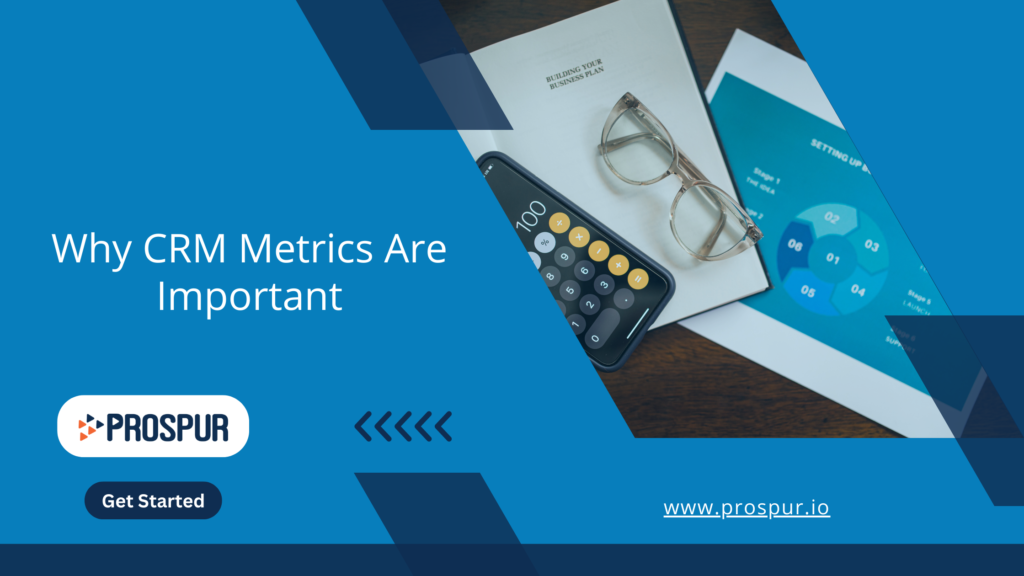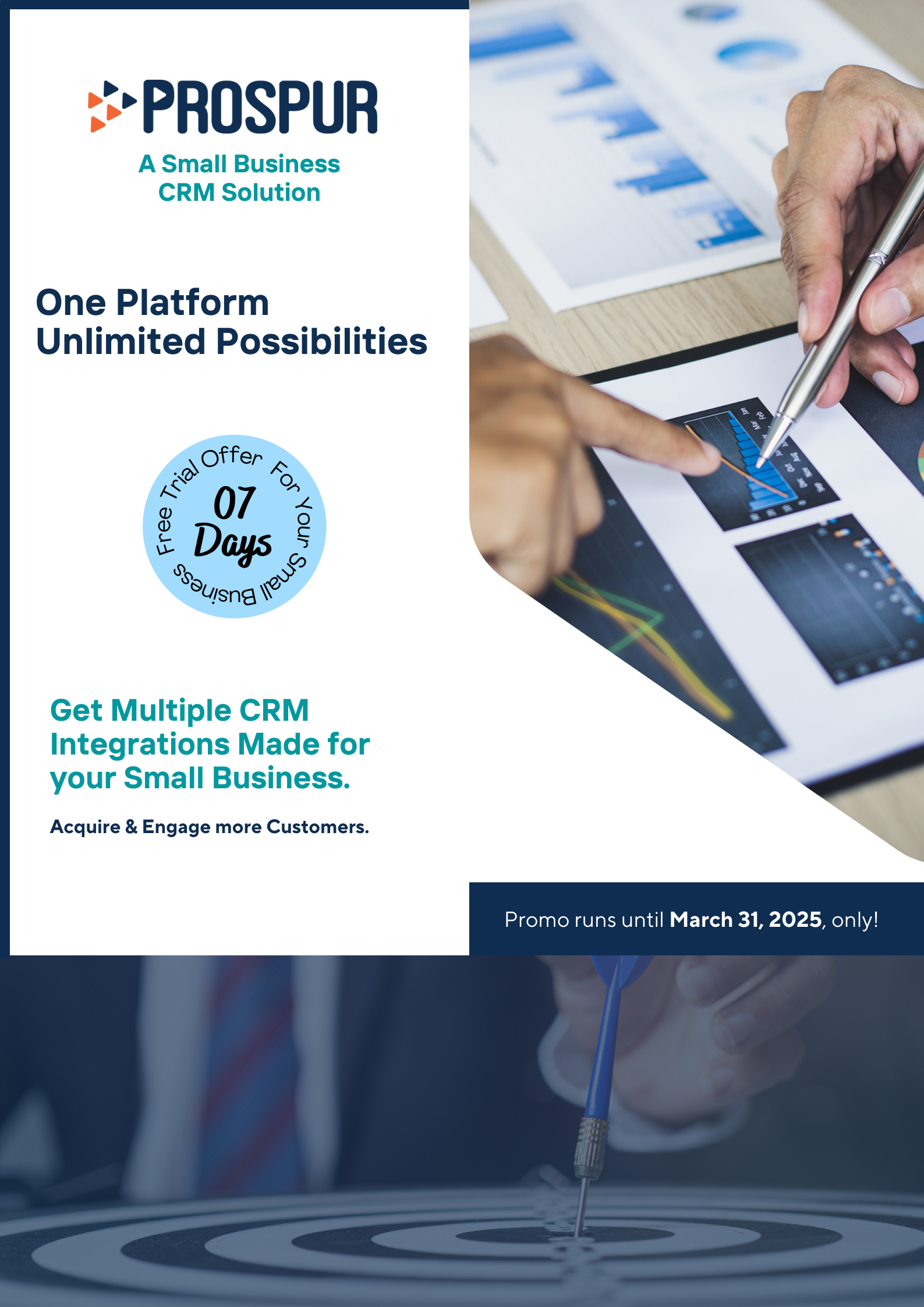Why Customer Relationship Management Metrics Are Important
Editorial StaffJanuary 5, 2024

Purchasing a CRM solution is one thing and drilling down to the most important metrics is another. Most businesses do not leverage the full power of a CRM solution and do not know which metrics to track.
If your sales teams are not entering accurate data into the CRM, the metrics and corresponding insights will be off-target, and the purpose of having a CRM will be defeated.
Studies also show that bad-quality data in CRM costs businesses up to $32,000 per sales representative.
What Are CRM Metrics?
CRM metrics are crucial to propelling your business toward rapid growth. Metrics are data points that help companies log and analyze customer information, track sales, and marketing efforts, and vet the results against short-term and long-term goals.
Some of the important questions to ask while choosing the metrics for your business are –
- Which metrics will indicate success in my business?
- How do I find them?
- How do I interpret these metrics for valuable insights?
Why Are CRM Metrics Important?
The importance of CRM metrics shows in the value they provide. If you use the metrics correctly, they can drive up engagement with customers and sales.
Each business has a different need, and it is essential to know which metrics apply to you. It is best to get high-quality data at the first touchpoint so that the metrics provide the right insights.
Businesses use robust validations at the first point of data entry. For example, the system should be able to flag duplicates if three records with the names John Smith, J. Smith, and John S. have the same phone number.
You must also regularly train your sales representatives to capture accurate sales data on the CRM. Additionally, using APIs, you can automate the process by linking the CRM system with web forms or third-party systems.
3 Ways To Look At CRM Metrics:
The sheer number of CRM metrics can be daunting. However, we can classify them into either one of the categories below.
- Business performance metrics – These metrics focus on the performance of the business. They include pipeline, sales performance, and other metrics you vet against short-term or long-term goals.
- User adoption metrics – These are internal metrics that measure processes and help you understand how the company is functioning. They indicate how employees use the CRM system and what their productivity is.
- Customer perception metrics – These metrics indicate how customers interact with your company. It includes customer satisfaction, retention, and feedback throughout the sales pipeline.
7 Most Common CRM Metrics To Track:
Here is a list of the most common CRM metrics that every business must track. However, you must study the business first and understand which metrics are most valuable for you.
#1. Customer Acquisition Cost (CAC)
This metric indicates the cost a company bears to acquire one lead. The cost includes advertising spending, commissions and bonuses to the sales team, salaries, and the cost of running the infrastructure.
The best way to capture this cost is to divide the total cost you spent in a period by the number of customers you gained. For example, if you spent $5,000 and gained 25 customers, your CAC will be $5,000/25 = $200.
The goal of a good sales team is to reduce the CAC while maintaining a high level of service.
#2. Customer Lifetime Value (CLV)
CLV is the total amount a customer spends over the course of their relationship with your company. For example, a customer who regularly buys from Amazon.com has a low CAC and a very high CLV (an ideal scenario). CLV metrics help companies target the right customers and retain them for repeat business.
For example, if a customer spends an average of $3,000 per year and purchases your product or service for the next 5 years, the total spend is $3,000 x 5 = $15,000.
Subtract the CAC from this and you get the CLV of $15,000 – $200 = $14,800. You can improve the CLV by upselling, loyalty programs, and cross-selling your products and services.
#3. Customer Churn
This metric indicates the number of customers you lose during a given week, month, or quarter. If the churn rate for your business is higher than the target, you may have to check the cause of it.
You need to review the sales team practices or other processes to see what is causing higher customer churn. By tracking this metric, you can design a better business strategy for retaining customers.
#4. Net Promoter Score (NPS)
NPS tracks the customers’ satisfaction level. At several touchpoints during the lead-to-cash cycle, you can ask for a quick rating which could be between 1 and 10, with the latter as the highest.
Studies put the customers into the following sections –
- 0-6 – Potential ‘detractors’ who could damage the company’s reputation.
- 7-8 – These customers are ‘passives’ who enjoy your product or service but don’t have any attachment to it.
- 9-10 – This is the band your sales team should target. The customers in this band are ‘promoters’ who are extremely happy with your service and would happily promote it to their friends and family.
#5. Customer Effort Score (CES)
This metric indicates a customer’s effort to get answers to their questions and issues. It is an important metric that influences all other metrics.
A high CES may suggest that the customers are spending more time getting answers to their questions, which could be a potential reason for a high churn rate and low CLV.
#6. Rate of Renewal
If you are a subscription-based business, the rate of renewal is a vital metric. If customers renew their subscriptions regularly, it indicates that you are providing value and that the customers are happy.
It is a powerful indicator of your company’s growth. The formula to measure this metric is (Total subscriptions in a given year/ renewals at the end of the year).
For example, if 100 customers subscribe to your service and 95 renew it at the end of the year, your rate of renewal is 95%.
#7. Customer Retention Cost
Studies show that 80% of revenue comes from 20% of the loyal customers that you managed to retain. That’s how important this metric is, and your customer retention efforts should always outweigh the acquisition efforts.
Many inexperienced businesses focus on growth by acquiring new customers but fail to nurture existing ones. This leads to a constant struggle and a higher CAC.
Final Words & Bottom Line:
It is important to take a strategic approach while selecting the right metrics and implementing them. Some of the steps you can take are –
- Defining and quantifying the short-term and long-term business targets.
- Explaining the CRM tactics and identifying a convenient formula for every process, including sales, service, and marketing.
- Linking the business objectives with CRM tactics and finding the exact metrics to help you grow.
It is now time to take action. Enterprise-grade CRM solutions and metrics were not available for small businesses at an affordable cost.
However, a cloud-based CRM for small and medium businesses can gain access to high-quality metrics to grow sustainably.

